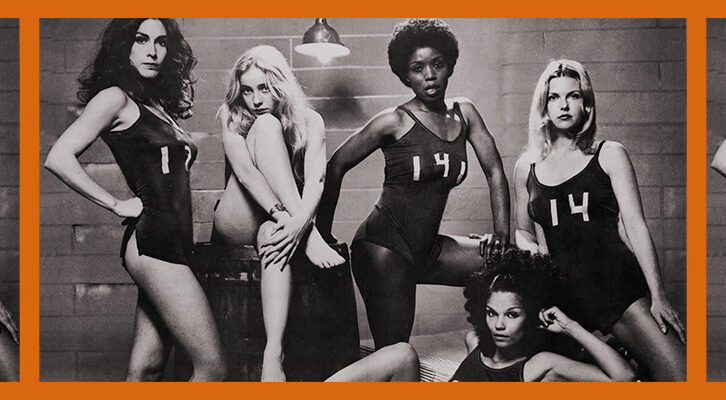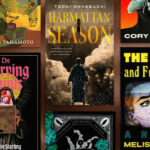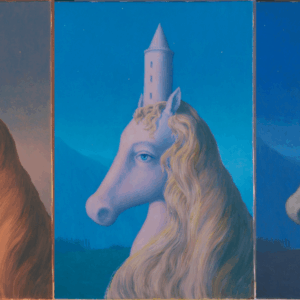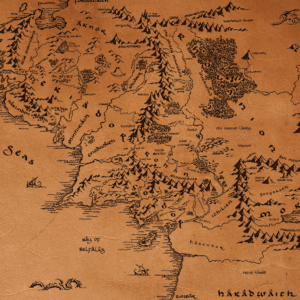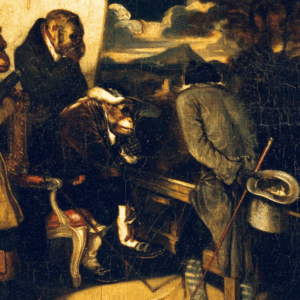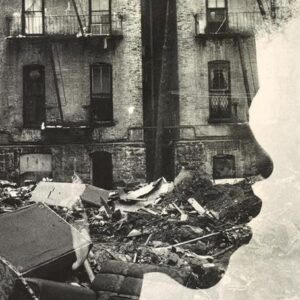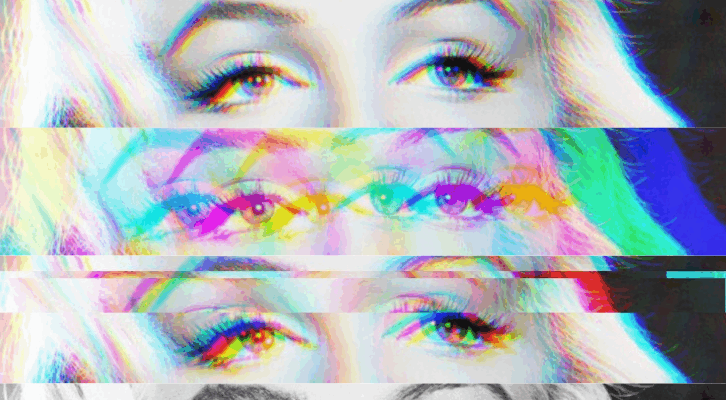
What You See Is What You Get: The Optical Illusions That Shape Fiction—and Ourselves
T.J. Martinson Explores the Narrative Role of Sight on the Page and in the Real World
Seeing isn’t passive. What we see and how we see it shapes who we are—or at least, who we believe ourselves to be—by constructing, distorting, and defining our reality. Fiction knows this well, how our perception is filtered through the eyes we’re given, or the ones we wish we had. But this dynamic isn’t just a metaphor. It’s a psychological reality, and a narrative one, shaping how stories are told, understood, and even lived.
The best and most necessary example is Toni Morrison’s debut, The Bluest Eye, in which Pecola Breedlove desires to have blue eyes, just like the happy, blond-haired, and white-skinned children in the storybooks she reads. Pecola’s longing follows a heart-breakingly innocent logic: blue eyes will make her beautiful, and beauty will make her loved, protected, and seen. But it also reflects her beliefs in the power of perception. As another character observes, “Here was an ugly little girl asking for beauty…A little black girl who wanted to rise up out of the pit of her blackness and see the world with blue eyes.” For Pecola, sight dictates perception, and perception dictates identity, such that she believes changing how she sees might also change how she is seen.
What we see and how we see it shapes who we are—or at least, who we believe ourselves to be—by constructing, distorting, and defining our reality.
Neuroscientists and cognitive psychologists might agree, to a point. Theories of visual perception emphasize not just how sight fails us, but how those failures shape our sense of reality—and of self. Take for instance “change blindness,” or the well-documented phenomenon whereby individuals fail to notice unexpected changes in their visual field. In one study, an interviewer asking questions is covertly swapped with someone else in the middle of the interaction, often without detection. The brain is so focused on the content of the question that it fails to register a visual change. Magicians owe their careers, such as they are, to change blindness.
Similarly, the theory of “predictive processing” suggests that what we see is largely determined by what we expect to see based on what we have seen. Imagine a smallish object darts past your window. In reality, it was a mutant cicada. But your brain, drawing from past experience and probability, sees a robin because robins are more likely to be darting past your window than a freakish insect.
Taken together, these theories suggest that sight is less about taking in raw visual data and more about the brain filling in the gaps based on context and prior knowledge. The resulting perception will shape the way you see things going forward because, like narrative, vision is shaped by expectation—by what’s likely to happen next, based on what’s come before. The world we “see” is a subconscious construction, a story our brain builds around us using the raw materials of experience, memory, and beliefs. A construction that, in turn, molds our sense of self.
Returning to The Bluest Eye, we might then hypothesize that what we, as readers, see—a young girl suffering trauma, internalized racism, and mental illness—is not what Pecola sees. Her afflictions shape the very architecture of her perception. And yet, if we can stomach an additional layer of tragedy, she seems painfully aware of that distortion. She wants to start over with new eyes, eyes that might allow her to perceive and be perceived differently. Eyes that might give her a new life.
*
My new novel, Her New Eyes, is very interested in the dynamic between sight and identity. Susan, a sixty-eight-year-old woman living in Indiana, receives new eyes. Soon after, she experiences visions of the life of Marilyn Monroe—and gradually, inexplicably, transforms into her. At first, Susan dismisses the changes, but as Monroe begins appearing not just in dreams but in the mirror, the transformation deepens. Her body, her consciousness, and her entire life starts to shift. She becomes someone else. What she sees is what she gets.
If seeing is believing, then literature is an engine for belief—for constructing and deconstructing how we see the world.
Whereas Pecola of The Bluest Eye prays that new eyes will lead to a better life, Susan’s new eyes disrupt a life she was already happy living. In writing Her New Eyes, I continually found myself returning to the same question: what does it mean to see the world differently—and to be seen differently as a result? It’s a question I believe to be at the heart of storytelling.
In literature, sight isn’t just a motif. It’s foundational to how we tell and understand stories. The creative writing dogma of “show don’t tell” is an obvious example, but it isn’t specific to the sense of sight itself. Consider instead dramatic irony: in Othello, we watch Othello unravel because he believes in what he sees—a handkerchief, a glance— but cannot see what we, the audience, already know. The tragedy lies in that visual gap, the disconnect between perception and reality, between self and truth. We could apply a similar reasoning to literary representations of visual impairments or blindness. Stripped of strictly visual input, the blind men scattered across Cormac McCarthy’s desolate novels construct for themselves a world grounded in metaphor, abstraction, and mystical introspection. And more often than not, they are seen by those around them as crazed, further emphasizing how the spectrum of sight reflects a spectrum of realities.
Beyond classical tragedy and brooding cowboys, fiction itself relies deeply on sight—what characters know, what they miss, and what we as readers are allowed to see according to the story’s point of view, a term that makes explicit the relationship between storytelling and sight. For example, Kazuo Ishiguro’s first-person narrators are often shaped by their blinkered perception of the world. (To avoid spoilers, I’ll say only that Never Let Me Go is a masterclass in a character slowly understanding their own reality by piecing together what they’ve always seen, but never fully recognized). Even in limited third-person narration, as in Elizabeth Strout’s Olive Kitteridge, the narrator hugs the protagonist so tightly that the narrator’s perception—and thus their voice—becomes nearly indistinguishable from the character’s own. In second-person, the illusion is even tighter: the reader is conscripted into a specific way of seeing the world, a specific self.
If seeing is believing, then literature is an engine for belief—for constructing and deconstructing how we see the world. Much has been made of the claim that reading promotes empathy. But that always feels like an underwhelming justification. After all, even sock puppets promote empathy. Reading goes further. It allows us to inhabit a consciousness not our own. It reconfigures our senses. We try on new eyes to better understand our own—only rarely do we turn into Marilyn Monroe along the way.
__________________________________
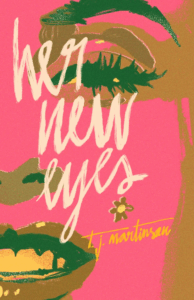
Her New Eyes by T.J. Martinson is available from Clash Books.
T.J. Martinson
T.J. Martinson is an assistant professor of English at Murray State University, teaching courses in creative writing and literature. He is the author of The Reign of the Kingfisher (Flatiron Books, 2019), Her New Eyes (Clash Books, May 2025), and Blood River Witch (Counterpoint Press, 2026).











